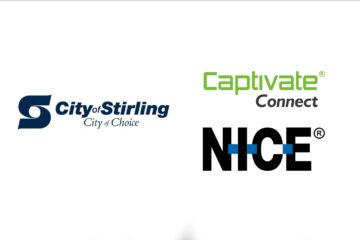Though it shows my age, I miss the cassette tape players. Remember them? They were high tech after the reel to reel systems which were hard to splice and difficult to store. The cassette tape was the first ‘technology’ that I used in our early days of on hold messages. The machines used then were a Sony Walkmans – a compact machine that played an endless looping cassette onto which we recorded the messages and music.
These were packaged up and installed on-site by a tech, usually a Telstra bloke in those days.
Why do I miss the old technology? Because the tapes used to stretch and break, and of course the motors on the Walkman’s wore out after playing 24 x 7, so our income was replenished regularly by replacing the hardware. The limited life of the tape itself encouraged businesses to update their on hold scripts and announcements whenever the tape broke.
Some smart machines combined tapes with digital memory chips so the recording played off of the tape to an unstable memory chip. Good in the 1980s.
After that, the tech got better, and CD’s were introduced. The CD contained the message and never stretched, though the machine still wore out spinning the CD. Fewer replacements.
The 1990s saw the introduction of the true digital players. Most were reliable but all needed some form of memory card sent out in the mail, and for someone within the business to locate the PBX in the dusty basement, find the player, replace the memory card and return the used one. These systems were reliable and provided a low level of customer interaction, hence changes in messaging becoming less frequent- leading the businesses to just have boring, repetitive, and never changing audio messages. From our perspective, it meant fewer updates, less income and we were in an industry that was fast becoming a Kodak. People hated waiting on hold- and most still do, for the messages on hold are still unchanged in most systems by most suppliers.
And in 2001? The recession where interest rates on houses shot to 14%. For businesses, they went to 22%. That killed the demand so it was time for a rethink. After some customer focus group research, we discovered that the most hated part of the On Hold messages was the music used between the promotions. This was and still is royalty-free music. You’ve heard it all before.
This was also the era of the Internet. Seeing this, Captivate developed the technology to avoid having to post out CDs or memory chips and instead used the Internet to deliver new content. This new technology also allowed us to break up constant repetitious music streaming with live content like today’s news, weather and sports reports, alongside a business’s own promotions. From 2002 to 2016, this was the benchmark and became the most desired on hold service for businesses that cared for their CX.
But technology never stands still- just ask Kodak. From about 2015, the telephone PBX was being phased out in favour of VoIP, or Hosted IP Voice. We don’t have a box on the wall in our offices nowadays, into which to plug the little player in- the system is in a secure data centre. So status quo on hold solutions are now an audio file that is manually uploaded by the telephony provider, often playing from the beginning each and every time someone is put on hold or transferred. Did I hear you say “boring, repetitive and never changing?”
Telstra is one of the first to recognise the problem on their TIPT system, and contact Captivate Connect looking for the engineers to solve this. Working with BroadSoft (Now Cisco) engineers, Captivate created the solution that lead to the Jukebox, Text a Brochure and a host of other useful and profitable features for business’ Hosted IP services. Find out more about these on our Messages on Hold page!
In this commodized world of IP telephones, many great systems are being developed, and Captivate Connect has been able to work with most service providers to create a better system for businesses globally. Are you next?


